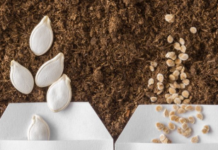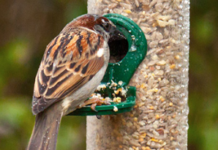MANHATTAN, Kan. — As garden season comes to a close, it is time to think about how to care for and harvest final produce.
Kansas State University horticulture expert Ward Upham said he sometimes receives questions about moving asparagus or rhubarb in the fall.
“Though these crops are traditionally transplanted in the spring (mid-March to mid-April), a fall move can be successful,” Upham said.
Upham shared his tips for successfully transplanting these vegetables:
• Wait until the tip has been browned by frost.
• Soil should be prepared the same way as in the spring.
• To ensure good root/soil contact, water well after planting.
• Mulching could be helpful for rhubarb to prevent heaving out of the soil.
For more information, the K-State Research and Extension has free publications on asparagus and rhubarb that are available online.
Last call for Tomatoes
Moving into October means fall weather, specifically cooler nights.
“If you have tomatoes, you may have some that are approaching maturity,” Upham said “Leave them on the vine until mature or until a frost is forecast.”
No one wants to leave precious fruits and vegetables out in the cold, so Upham shared what to do when harvesting fruit before a frost.
• Separate tomatoes into three groups for storage: mostly red, starting to turn, and still green.
• Any tomatoes with defects or breaks in skin should be discarded.
• Carboard trays lined with newspaper can be used to store and separate fruit.
• Tomatoes should be stored as close to 55 degrees Fahrenheit as possible.
“Tomatoes will ripen off the vine but must have reached a certain phase of maturity called the ‘mature green stage,’” Upham said.
Full size green tomatoes with a white star-shape on the bottom fit the description for being in the ‘mature green stage’.
Upham and his colleagues in K-State’s Department of Horticulture and Natural Resources produce a weekly Horticulture Newsletter with tips for maintaining home landscapes. The newsletter is available to view online or can be delivered by email each week.
Interested persons can also send their garden- and yard-related questions to Upham at [email protected], or contact your local K-State Research and Extension office.
-30-
FOR PRINT PUBLICATIONS: Links used in this story
K-State Horticulture Newsletter, https://hnr.k-state.edu/extension/info-center/newsletters/index.html
K-State Research and Extension local offices, www.ksre.k-state.edu/about/stateandareamaps.html
K-State Research and Extension is a short name for the Kansas State University Agricultural Experiment Station and Cooperative Extension Service, a program designed to generate and distribute useful knowledge for the well-being of Kansans. Supported by county, state, federal and private funds, the program has county extension offices, experiment fields, area extension offices and regional research centers statewide. Its headquarters is on the K-State campus in Manhattan. For more information, visit www.ksre.ksu.edu. K-State Research and Extension is an equal opportunity provider and employer.
Story by:
Emily Halstead
815-326-5751
[email protected]
For more information:
Ward Upham
785-532-6173
[email protected]





